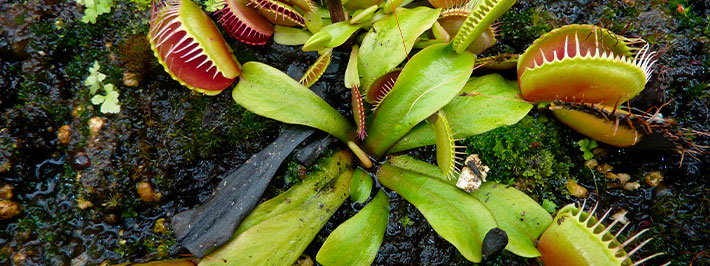
"Robot-plants": scientists seek to combine technology and nature
Singapore - Remotely manipulated carnivorous plants or plants that signal when they are affected by a disease: scientists are experimenting with new systems to communicate with plants.
In Singapore, researchers have connected plants to electrodes capable of detecting the weak electrical signals that plants naturally emit.
They used this technology to push a flycatcher, a carnivorous plant, to close its "jaws", formed of two lobes, after a signal emitted by a smartphone.
They then attached one of the lobes to a robotic arm in order to grab a thin piece of wire half a millimeter, then to grab a small object as it fell.
This technology is still in its infancy, but researchers believe that it could be used in the future to design "robot-plants" capable of handling objects too fragile for the rigid arms of conventional robots.
"These species of natural robots could interface with other artificial robots to create hybrid systems," Chen Xiaodong, the author of a study published by Nanyang Technological University (NTU) in Singapore, told AFP.
But there are still a lot of problems to be solved. For example, scientists can stimulate the "jaws" of the flycatcher to close, but they cannot yet make it open, a process that in nature takes 10 hours or more.
The system can also detect weak signals emitted by plants, giving rise to the possibility of farmers being alerted at an early stage when their plants are sick.
"By monitoring the electrical signals of plants, we may be able to detect possible distress signals and abnormalities," Chen notes.
"Farmers might realize that a disease is spreading, even before clear symptoms appear."
Scientists have long known the existence of electrical signals emitted by plants, but their irregular and soft surface makes it difficult to fit sensors.
Researchers at NTU University have designed electrodes that have the soft texture of plastic film and can be tied around a plant to detect signals more reliably.
They are glued with a "thermogel", a low temperature liquid which gels at room temperature.
Other researchers are also following this path.
In 2016 a team from the Massachusetts Institute of Technology (MIT) used spinach leaves as detectors capable of sending an email to scientists when explosives were detected in the basement.
The researchers had placed carbon nanotubes that could emit a fluorescent signal when plant roots detected nitroaromatics, a substance often found in explosives. The signal was read by an infrared camera which sent a message to the scientists.